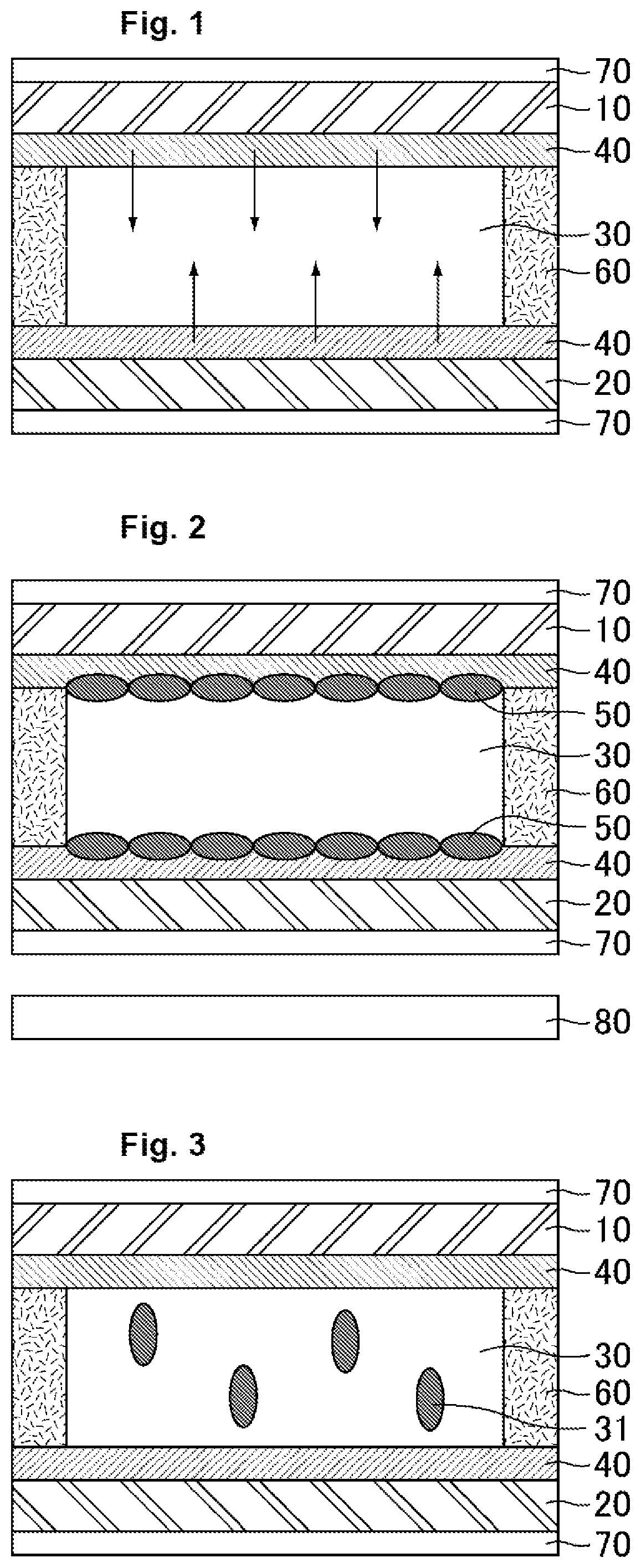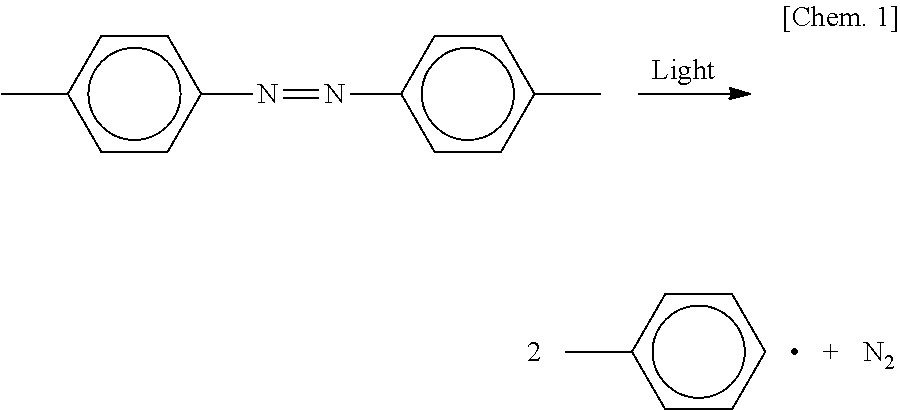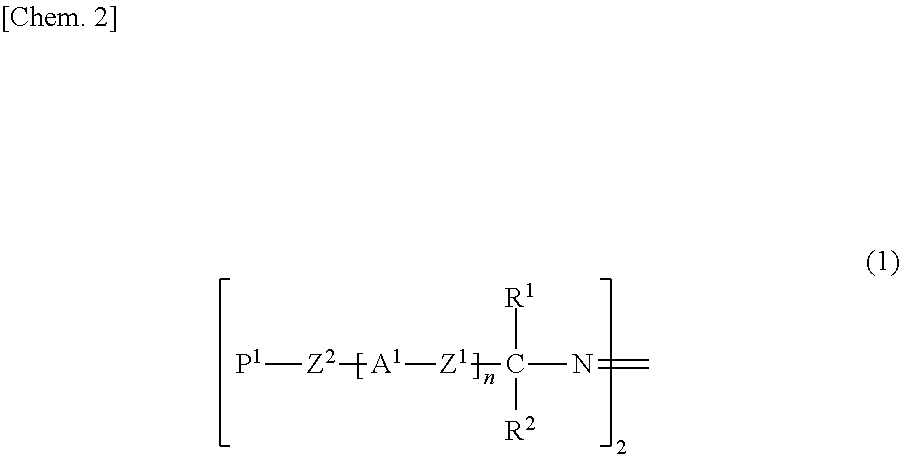Liquid crystal display device and method for manufacturing liquid crystal display device
a liquid crystal display device and liquid crystal display technology, which is applied in the direction of optics, non-linear optics, instruments, etc., can solve the problems of reducing the contrast ratio of the liquid crystal display device, affecting the effect of image sticking and staining, and affecting the appearance of liquid crystal panels. , to achieve the effect of reducing the voltage holding ratio, and reducing the generation of image sticking and stain
- Summary
- Abstract
- Description
- Claims
- Application Information
AI Technical Summary
Benefits of technology
Problems solved by technology
Method used
Image
Examples
synthesis example 1
[0200]An N,N-dimethylformamide (DMF) solution (3 mL) containing 10 g (35.7 mmol) of 4,4′-azobis(4-cyanovaleric acid) represented by the following formula (a) was dropwise added to thionyl chloride (10 mL), and the components were stirred at 0° C. for four hours. The thionyl chloride was then removed under reduced pressure, and thereby a solid powder of 4,4′-azobis(4-cyanovaleric acid chloride) represented by the following formula (b) was obtained. The solid powder of the following formula (b) was dissolved in 300 mL of dried tetrahydrofuran (THF). Thereto was added 100 mL of a dried THF solution containing 4.5 g (31 mmol) of hydroxypropyl methacrylate represented by the following formula (c) and 4 g (51 mmol) of pyridine, and the components were stirred at 0° C. for five hours. Then, the THE was removed and the resulting crude crystal was dissolved in diethyl ether. The solution was washed with an aqueous solution of sodium hydrogen carbonate, followed by anhydrous sodium sulfate. T...
example 1
[0201]An FFS-mode liquid crystal cell was actually produced as follows.
[0202]First, an ITO substrate provided with an FFS electrode structure formed of indium tin oxide (ITO) and a counter substrate provided with no electrode were prepared. Also, a liquid crystal alignment agent was prepared containing a polyamic acid (initial chemical imidization rate: 0%) that is represented by the following formula (A-1) and contains an azobenzene group in the main chain and a polyamic acid (initial chemical imidization rate: 0%) that contains no azobenzene group. In the polyamic acid represented by the following formula (A-1), X4 is a structure represented by the following formula (X4-1); and Y4 is an azobenzene group-containing unit represented by the following formula (Y4-1) or a unit represented by the following formula (Y4-2), with the azobenzene group-containing unit represented by the following formula (Y4-1) and the unit represented by the following formula (Y4-2) being introduced at a ra...
example 2
[0218]An FFS-mode liquid crystal cell of Example 2 was produced in the same manner as in Example 1, except that a polyamic acid (initial chemical imidization rate: 0%) represented by the formula (A-1) and containing an azobenzene group in the main chain (not containing a unit represented by (Y4-2) but containing an azobenzene group-containing unit represented by (Y4-1) alone as Y4) was used instead of the polyamic acid used in Example 1.
[0219]For the FFS-mode liquid crystal cell produced in Example 2, the same evaluation test as in Example 1 and other examples were performed. The results are shown in the following Table 2.
TABLE 2Before testAfter 5000-hour testVHR (%)Contrast ratioVHR (%)Contrast ratioExample 298.1115096.51060Example 198.4110095.31030
[0220]As shown in Table 2, the amount of the azobenzene groups which are photo-reactive functional groups of the polyamic acid-based photo-alignment films in Example 2 was double the amount thereof in Example 1. In comparison with Exampl...
PUM
| Property | Measurement | Unit |
|---|---|---|
| wavelength | aaaaa | aaaaa |
| angle | aaaaa | aaaaa |
| angle | aaaaa | aaaaa |
Abstract
Description
Claims
Application Information
 Login to View More
Login to View More - R&D
- Intellectual Property
- Life Sciences
- Materials
- Tech Scout
- Unparalleled Data Quality
- Higher Quality Content
- 60% Fewer Hallucinations
Browse by: Latest US Patents, China's latest patents, Technical Efficacy Thesaurus, Application Domain, Technology Topic, Popular Technical Reports.
© 2025 PatSnap. All rights reserved.Legal|Privacy policy|Modern Slavery Act Transparency Statement|Sitemap|About US| Contact US: help@patsnap.com



